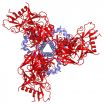Price gap between more and less healthy foods grows
2014-10-08
(Press-News.org) A new study, published today in the journal PLOS One, tracked the price of 94 key food and beverage items from 2002 to 2012. Its findings show that more healthy foods were consistently more expensive than less healthy foods, and have risen more sharply in price over time.
Food prices in the UK have risen faster than the price of other goods in recent years, and this new research shows that the increase has been greater for more healthy foods, making them progressively more expensive over time.
While less healthy foods had a slightly greater price rise relative to 2002, the absolute increase was significantly more for more healthy foods - a total average increase of £1.84 per 1000kcal for more healthy food across the decade, compared to £0.73 for less healthy food.
In 2002, 1000 kcal of more healthy foods – as defined by criteria devised for the UK government – cost an average of £5.65, compared to purchasing the same quantity of energy from less healthy food at £1.77. By 2012 this cost had changed to £7.49 for more healthy and £2.50 for less healthy foods.
Researchers from the Centre for Diet and Activity Research (CEDAR) at the University of Cambridge who conducted the study say that this trend could result in people increasingly turning to less healthy food.
"Food poverty and the rise of food banks have recently been an issue of public concern in the UK, but as well as making sure people don't go hungry it is also important that a healthy diet is affordable," said lead author Nicholas Jones.
"The increase in the price difference between more and less healthy foods is a factor that may contribute towards growing food insecurity, increasing health inequalities, and a deterioration in the health of the population." The cost of diet-related ill health to the National Health Service has been estimated to be £5.8 billion annually.
The 94 foods and beverages in the study were taken from the Office of National Statistics' Consumer Price Index 'basket': the list of items used to measure inflation in the UK. The items included in the study were those which remained in the 'basket' for every year of the decade analysed.
To match nationwide food prices to nutrient content for each of the foods, the researchers combined datasets from the Consumer Price Index and from the National Diet and Nutrition Survey. This novel link allowed them to establish which foods were either more or less healthy using an objective assessment of the foods' nutrient content, as defined by the UK Food Standards Agency's FSA-Ofcom nutrient profiling model.
"The finding shows that there could well be merit in public health bodies monitoring food prices in relation to nutrient content, hopefully taking into account a broader selection of foods than we were able to in this study," said Nicholas Jones.
The study's authors say their finding that more healthy food is more expensive tallies with work from similar high income nations. They point to other studies indicating that the EU's Common Agricultural Policy - which subsidises production of certain goods such as dairy, oil and sugar - has the potential to affect public health by influencing the availability and price of foods.
"To help achieve long-term improvements in eating habits, we need to address the high and rising prices of healthier foods, which is likely to be influenced by a number of factors including agricultural policy and production, food distribution, and retail pricing strategies," said senior author Dr Pablo Monsivais from CEDAR in Cambridge.
"Additionally, there is growing evidence that targeted subsidies can promote healthy eating for people on low incomes."
INFORMATION:
ELSE PRESS RELEASES FROM THIS DATE:
2014-10-08
Berkeley — Fad diets come and go, but might there be something to the ones that involve consuming grapefruit and grapefruit juice? New research at the University of California, Berkeley, suggests that a closer look at grapefruit juice is warranted.
A new study, to be published Wednesday, Oct. 8, in the peer-reviewed journal PLOS ONE, found that mice fed a high-fat diet gained 18 percent less weight when they drank clarified, no-pulp grapefruit juice compared with a control group of mice that drank water. Juice-drinking mice also showed improved levels of glucose, ...
2014-10-08
Cut off by freeways and human development, mountain lions in southern California are facing a severe loss of genetic diversity, according to a new study led by the University of California, Davis in partnership with The Nature Conservancy.
The study, published today in the journal PLOS ONE, represents the largest genetic sampling of mountain lions, or pumas, in southern California. It raises concerns about the current status of mountain lions in the Santa Ana and Santa Monica mountains, as well as the longer-term outlook for mountain lions across southern California.
UC ...
2014-10-08
Plant scientists are working to improve important food crops such as rice, maize, and beans to meet the food needs of a growing world population. However, boosting crop output will require improving more than what can be seen of these plants above the ground. Root systems are essential to gathering water and nutrients, but understanding what's happening in these unseen parts of the plants has until now depended mostly on lab studies and subjective field measurements.
To address that need, researchers from the Georgia Institute of Technology and Penn State University have ...
2014-10-08
Lebanon, NH, 10/8/14 —To reduce false positives when identifying genetic variations associated with human disease through genome-wide association studies (GWAS), Dartmouth researchers have identified nine traits that are not dependent on P values to predict single nucleotide polymorphisms (SNP) reproducibility as reported in Human Genetics on October 2, 2014.
Reproducibility rates of SNPs based solely on P values is low. Dartmouth authors' analysis of GWAS studies published in Nature Genetics showed a 1-5 percent replication rate.
"It is important to improve our ...
2014-10-08
A new study from UCLA found that a drug being evaluated to treat an entirely different disorder helped slow the progression of Parkinson's disease in mice.
The study, published in the October edition of the journal Neurotherapeutics, found that the drug, AT2101, which has also been studied for Gaucher disease, improved motor function, stopped inflammation in the brain and reduced levels of alpha-synuclein, a protein critically involved in Parkinson's.
Although the exact cause of Parkinson's is unknown, evidence points to an accumulation of alpha-synuclein, which has ...
2014-10-08
Astronomers working with NASA's Nuclear Spectroscopic Telescope Array (NuSTAR), led by Caltech's Fiona Harrison, have found a pulsating dead star beaming with the energy of about 10 million suns. The object, previously thought to be a black hole because it is so powerful, is in fact a pulsar—the incredibly dense rotating remains of a star.
"This compact little stellar remnant is a real powerhouse. We've never seen anything quite like it," says Harrison, NuSTAR's principal investigator and the Benjamin M. Rosen Professor of Physics at Caltech. "We all thought an ...
2014-10-08
ATLANTA – October 08, 2014 – A study from American Cancer Society researchers finds the increased risk of premature death associated with a higher body mass index (BMI) is similar for African Americans and whites, in contrast to previous, smaller studies that indicated the association may be weaker for African Americans. The study, published in the open-access, online publication PLOS ONE, finds that among never smokers without prevalent disease, overweight and obesity are strongly associated with subsequent risk of mortality in every race. The authors say ...
2014-10-08
New Haven, Conn. - HIV is adept at eluding immune system responses because the protein it uses to infect cells is constantly changing.
Now a team of researchers including scientists from Yale have stripped the cloak from this master of disguise, providing a high resolution image of this surface spike protein and monitoring how it constantly changes its shape, information that suggests new ways to attack the virus through drugs and vaccines.
In two papers published simultaneously online Oct. 8 in the journals Science and Nature. team of researchers led by scientists ...
2014-10-08
Highly-detailed radio-telescope images have pinpointed the locations where a stellar explosion called a nova emitted gamma rays, the most energetic form of electromagnetic waves. The discovery revealed a probable mechanism for the gamma-ray emissions, which mystified astronomers when first observed in 2012.
"We not only found where the gamma rays came from, but also got a look at a previously-unseen scenario that may be common in other nova explosions," said Laura Chomiuk, of Michigan State University.
A nova occurs when a dense white dwarf star pulls material onto ...
2014-10-08
New research has illuminated the movement and complete structure of the spikes on HIV that the virus uses to bind to the cells it infects. This research, led by scientists at the National Institutes of Health, Weill Cornell Medical College and Yale University School of Medicine, could help advance efforts to develop HIV vaccines and treatments.
Three sets of a pair of molecules called gp120 and gp41 constitute each HIV spike, which adopts different configurations before and after the virus fuses with a cell. The atomic-level structures of pre-fusion gp120 and post-fusion ...
LAST 30 PRESS RELEASES:
[Press-News.org] Price gap between more and less healthy foods grows


